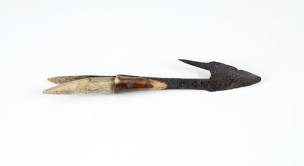WWW.QAYANEK.COM

Wilkinson,B. (2008). Qayanek: Of and about Kayaks. Retrieved November 9, 2010, from www.qayanek.com.
"Builders of the most authentic Native American seal skin qayat (kayaks) in the world"Qayanek is passionately dedicated to antiquity research, documentation, preservation, and construction of the traditional Native American Yup'ik Caninermiut Qayaq.
Qayanek builds kayaks as close as possible to how they were designed in traditional mud houses. Of the two basic Yup'ik kayak designs, the less documented eastern version, built in Kwigillingok, Alaska, may be the more elegantly engineered.
The Caninermiut Qayaq has 2 bow, 4 stern, and 5 cross members that are tediously extracted from the bends of driftwood spruce stumps. All measurements are custom anthropomorphic body measurements. Qayanek's real seal skin on frame kayak is caulked using seal oil and moss, with grass strands backing the inner seams.
The paragraphs above are from Qayanek's website briefly describing some of the details about the work that we do. I failed to mention that I am part of Qayanek, it is part of who I am as a person now. I have been raised and taught how to construct the skeletal kayak structure under the guidance of my father (Bill Wilkinson) and late grandfather (Frank Andrew).
 Frank Andrew's son and student, Qayanek master traditional qayaq builder Noah Andrew Sr., sits next to the Qayanek built Loon qayaq adorned with one of his father's two traditional deck design. 2006 On the lake side of the kayak you can see the head of the harpoon where it's held by an ivory hook.
Frank Andrew's son and student, Qayanek master traditional qayaq builder Noah Andrew Sr., sits next to the Qayanek built Loon qayaq adorned with one of his father's two traditional deck design. 2006 On the lake side of the kayak you can see the head of the harpoon where it's held by an ivory hook.

























